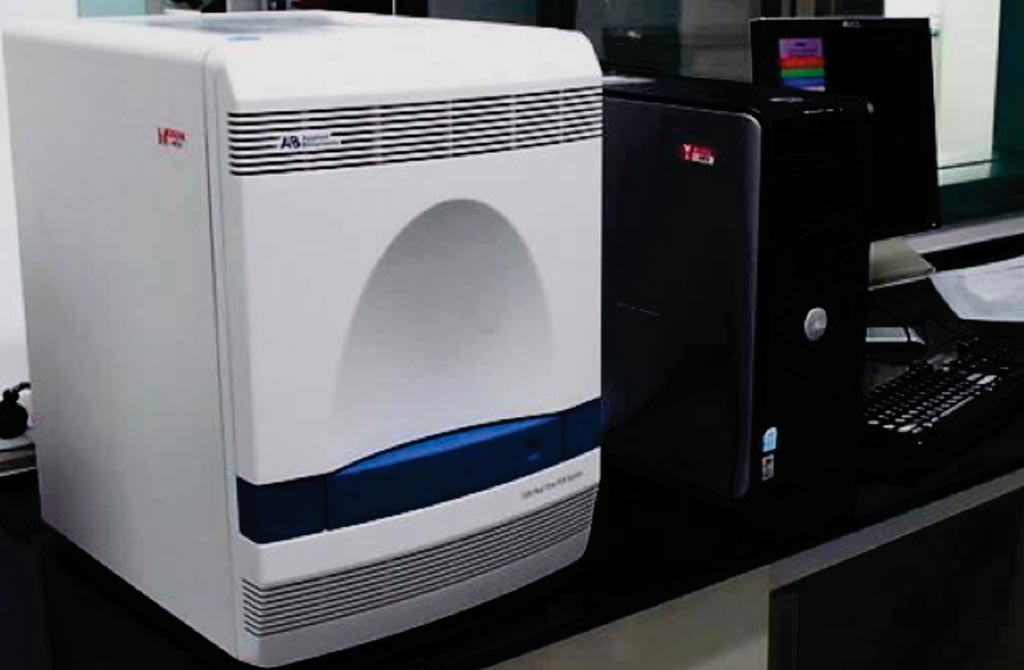CSF Examined for Enteroviral Nervous System Infection
By LabMedica International staff writers
Posted on 19 Apr 2018
Infections caused by enteroviruses are among the most common infectious diseases of the central nervous system (CNS). Enterovirus infections account for 40-77% of all viral meningitis cases in adults. An infection of the meninges results in an uncharacteristic headache usually accompanied by fever and neck stiffness.Posted on 19 Apr 2018
Enterovirus-induced meningitis and encephalitis are diagnosed by inflammatory changes in the cerebrospinal fluid (CSF) including pleocytosis and the presence of the virus, which can be detected by molecular analysis. However, uncommon clinical presentations, especially in older adults and the absence of CSF pleocytosis may impede the diagnosis of enteroviral nervous system infections.

Image: The ABI 7500 Real Time PCR System is a fully integrated system for real-time detection of PCR (Photo courtesy of Applied BioSystems).
Scientists from Hanover Medical School (Hanover, Germany) collected simultaneously CSF and serum samples that were analyzed by routine methods. The data from 46 patients who were PCR-positive for enteroviruses in the CSF between 2002 and 2017 were evaluated. CSF-specific oligoclonal bands were determined by isoelectric focusing in polyacrylamide gels with consecutive silver staining. RNA was extracted from the CSF using a Qiagen Viral RNA Kit Reverse transcription and real-time PCR amplification of enterovirus RNA was performed as a one-step reaction, on a LightCycler 1.5 platform until September 2014 and subsequently with a slightly modified protocol on an ABI 7500 Real-Time cycler.
The team reported that 20% of patients reported a sudden onset of severe headache that led to the initial suspected diagnosis of subarachnoid hemorrhage. General signs of infection, such as fever, elevated C-reactive protein, and an elevated white blood cell count, were found in only 61%. Most patients exhibited consistent inflammatory CSF changes, with elevated cell counts (85%) and blood–CSF barrier dysfunction (83%). Patients with normal CSF cell counts were significantly older, less frequently presented with meningitis, and exhibited lower peripheral white blood cell counts. Sequencing revealed species Enterovirus B in all patients, with most sequences related to echovirus 30.
The authors concluded that the absence of CSF pleocytosis, isolated cranial nerve involvement, and only infrequent general signs of infection may impede the diagnosis of enteroviral nervous system infections. A thorough CSF analysis including PCR is essential for a reliable diagnosis. The study was published in the March 2018 issue of the International Journal of Infectious Diseases.
Related Links:
Hanover Medical School













